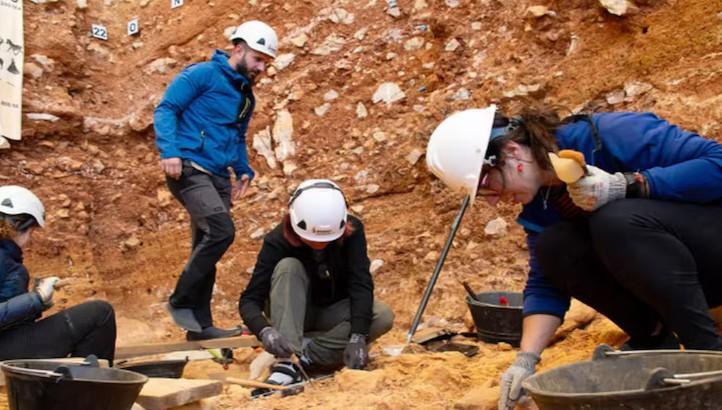
Ancient humans ate children 8.5 lakh years ago, researchers find
A recent discovery at the Gran Dolina cave site has sent shockwaves through the scientific community, revealing a dark and disturbing aspect of humanity’s past. According to researchers, ancient humans ate children, specifically a child between the ages of two and four, some 8.5 lakh years ago. The discovery was made possible by the excavation of a human neck bone belonging to a child with clear butchery marks on the neck.
The bone, which was discovered at the Gran Dolina cave site in Spain, is believed to belong to Homo antecessor, a species that is considered to be the last common ancestor of both Homo sapiens and Neanderthals. The finding provides a chilling glimpse into the dietary habits of our ancient ancestors, and raises questions about the evolution of human behavior and culture.
The discovery was made by a team of researchers from the Institute of Human Paleoecology and Social Anthropology (IPHES) and the Spanish National Research Council (CSIC). The team, led by Dr. Jose Maria Bermudez de Castro, has been studying the Gran Dolina cave site for over two decades, and has made numerous significant discoveries about the lives of early humans.
The discovery of the child’s neck bone is significant because it provides evidence of cannibalism in early humans. The bone shows clear signs of butchery, including cut marks and chop marks, which suggest that it was intentionally cut and hacked apart. The fact that the bone was found at the Gran Dolina cave site, which is believed to have been a human settlement, further supports the theory that humans were eating children.
The Gran Dolina cave site is located in the Atapuerca Mountains of northern Spain, and is considered one of the most important paleoanthropological sites in the world. The site has yielded numerous human fossils, including those of Homo antecessor, which is believed to have lived in the region between 800,000 and 1.2 million years ago.
Homo antecessor is considered to be a key transitional phase between earlier human species, such as Homo heidelbergensis, and later human species, such as Homo neanderthalensis and Homo sapiens. The discovery of the child’s neck bone provides a unique window into the lives of these early humans, and sheds light on the cultural and social practices of our ancient ancestors.
The discovery also raises questions about the evolution of human behavior and culture. Cannibalism has been documented in many human societies throughout history, but it is not a common practice in modern times. The fact that ancient humans ate children suggests that cannibalism may have played a more significant role in human history than previously thought.
The discovery also highlights the complexity and diversity of human cultures and societies, even in ancient times. While cannibalism may have been a common practice in some societies, it is unlikely that it was widespread or accepted in all human societies.
In conclusion, the discovery of the child’s neck bone at the Gran Dolina cave site provides a chilling glimpse into the dietary habits of our ancient ancestors. The finding is significant because it provides evidence of cannibalism in early humans, and sheds light on the cultural and social practices of our ancient ancestors. The discovery also raises questions about the evolution of human behavior and culture, and highlights the complexity and diversity of human cultures and societies, even in ancient times.
Source: http://comunicacio.iphes.cat/cat/news/new/879/category/1/noticies.html






